Related Research Articles

The Scottish Borders is one of 32 council areas of Scotland. It is bordered by West Lothian, Edinburgh, Midlothian, and East Lothian to the north, the North Sea to the east, Dumfries and Galloway to the south-west, South Lanarkshire to the west, and the English ceremonial counties of Cumbria and Northumberland to the south. The largest settlement is Galashiels, and the administrative centre is Newtown St Boswells.

Jedburgh is a town and former royal burgh in the Scottish Borders and the traditional county town of the historic county of Roxburghshire.

Roxburghshire or the County of Roxburgh is a historic county and registration county in the Southern Uplands of Scotland. It borders Dumfriesshire to the west, Selkirkshire and Midlothian to the northwest, and Berwickshire to the north. To the southwest it borders Cumberland and to the southeast Northumberland, both in England.
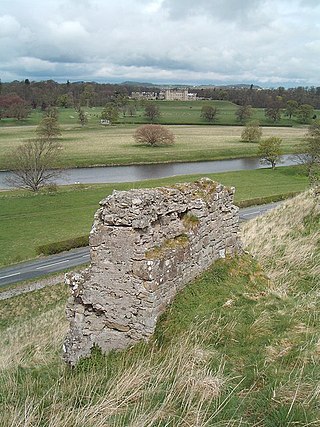
Roxburgh is a civil parish and formerly a royal burgh, in the historic county of Roxburghshire in the Scottish Borders, Scotland. It was an important trading burgh in High Medieval to early modern Scotland. In the Middle Ages it had at least as much importance as Edinburgh, Stirling, Perth, or Berwick-upon-Tweed, for a time acting as de facto capital.
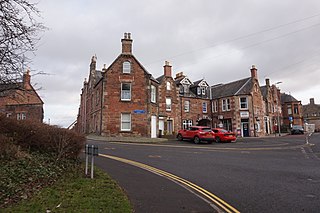
Newtown St Boswells is a village in the Scottish Borders council area, in south-east Scotland. The village lies south of the Eildon Hills on the Sprouston and Newtown burns, approximately 40 miles (64 km) south-east of Edinburgh. It is the administrative centre of the Scottish Borders, and was historically in the county of Roxburghshire.
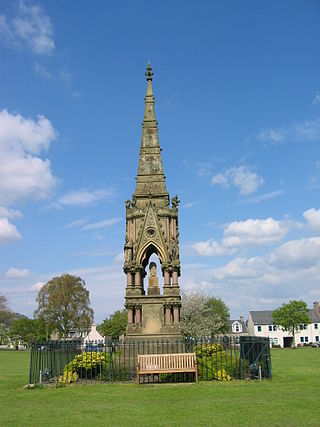
Denholm is a small village located between Jedburgh and Hawick in the Scottish Borders region of Scotland, UK. The estimated population of Denholm is 600. There is a village green in the centre. It lies in the valley of the River Teviot. Denholm is a Conservation Area listed as 'a planned village as opposed to the traditional unplanned or organic form of village usually found in Roxburghshire.'

Ednam is a small village near Kelso in the Scottish Borders area of Scotland.
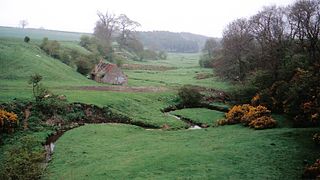
Cessford Burn is a small stream which eventually runs to meet the Kale Water and then joins the River Teviot, finally entering the River Tweed at Kelso, Scotland.
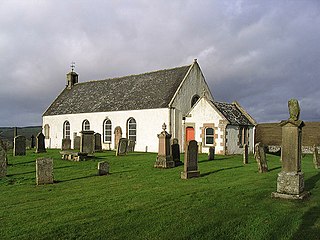
Oxnam is a village near Jedburgh, in Roxburghshire in the Scottish Borders area of Scotland. It is a primarily residential village.
Blaikie is a Scottish surname.
Holydean Castle was a castle sited near Melrose in Bowden, 1.25 miles SW of the village, in the Scottish Borders region of Scotland, and the former Roxburghshire.

Stichill is a village and civil parish in the historic county of Roxburghshire, a division of the Scottish Borders. Situated 2 miles (3.2 km) north of the Burgh of Kelso, Stichill lies north of the Eden Water and 5 miles (8.0 km) from the English Border at Coldstream.
The Battle of Hadden Rig was fought about three miles east of Kelso, in the Scottish Borders, between Scotland and England on 24 August 1542, during the reigns of King James V of Scotland and Henry VIII of England. The English army was led by Robert Bowes, Deputy Warden of the English East March. It was a significant Scottish victory, but it was overshadowed by the disastrous Scottish defeat at the Battle of Solway Moss in November.
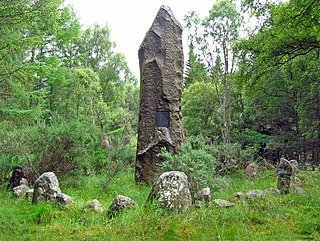
The Battle of Corrichie was fought on the slopes of the Hill of Fare in Aberdeenshire, Scotland, on 28 October 1562. It was fought between the forces of George Gordon, 4th Earl of Huntly, chief of Clan Gordon, and the forces of Mary, Queen of Scots, under James Stewart, 1st Earl of Moray.
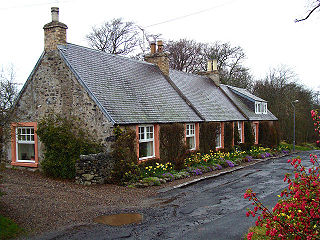
Smailholm is a small village in the historic county of Roxburghshire in south-east Scotland. It is at grid reference NT648364 and straddles the B6397 Gordon to Kelso road. The village is almost equidistant from both, standing 6 miles (10 km) northwest of the abbey town of Kelso. Since local government reorganisation in Scotland in the early 1970s, Smailholm has been part of the Scottish Borders Council.

Ednam Church is a member church of the Church of Scotland and is co–joined with Kelso North Church in Kelso. Ednam is in the old county of Roxburghshire now part of the Scottish Borders Council. Ednam is 3.0 miles (4.8 km) NNE of Kelso on the B6461 road and is at grid reference NT737371

The Railway of Kelso and Jedburgh branch lines was a 'network' of three distinct railway services serving Kelso in the Scottish Borders.

Sprouston is a village, parish and former feudal barony in the Scottish Borders area of Scotland, as well as the historic county of Roxburghshire, located 2 miles north-east of Kelso.

Lempitlaw is a hamlet, former parish and former feudal barony in the Scottish Borders area of Scotland, as well as the historic county of Roxburghshire.
References
- ↑ Scotland's Places
- ↑ Alexander JOHNSTON, William JOHNSTON, and James YOUNG. 1894. A Genealogical Account of the Descendants of James Young, Merchant Burgess of Aberdeen and Rachel Cruickshank His Wife. 1697-1893. With Notes As to Many of the Families with Which They Are Connected. University Press: Aberdeen, 1894. Page 154.
- ↑ William J. Hadden Private conversations on family history, 1980s.
- ↑ Groome, Francis Hindes. Ordnance Gazetteer of Scotland: A Survey of Scottish Topography, Statistical, Biographical and Historical. 1882. Volume 3, page 231.
- ↑ "Residential Building Plot" https://media.onthemarket.com/properties/1270218/doc_0_2.pdf
- ↑ "Hadden Farm".
- ↑ Neville, Cynthia J. Acts of Alexander III, King of Scots, 1249-1286. Page 219._Edinburgh Univ. Press, 2013_
- ↑ National Records of Scotland. https://catalogue.nrscotland.gov.uk/nrsonlinecatalogue/details.aspx?reference=RHP6437&st=p&tc=n&tl=n&tn=n&tp=y&p=sutherland&po=p